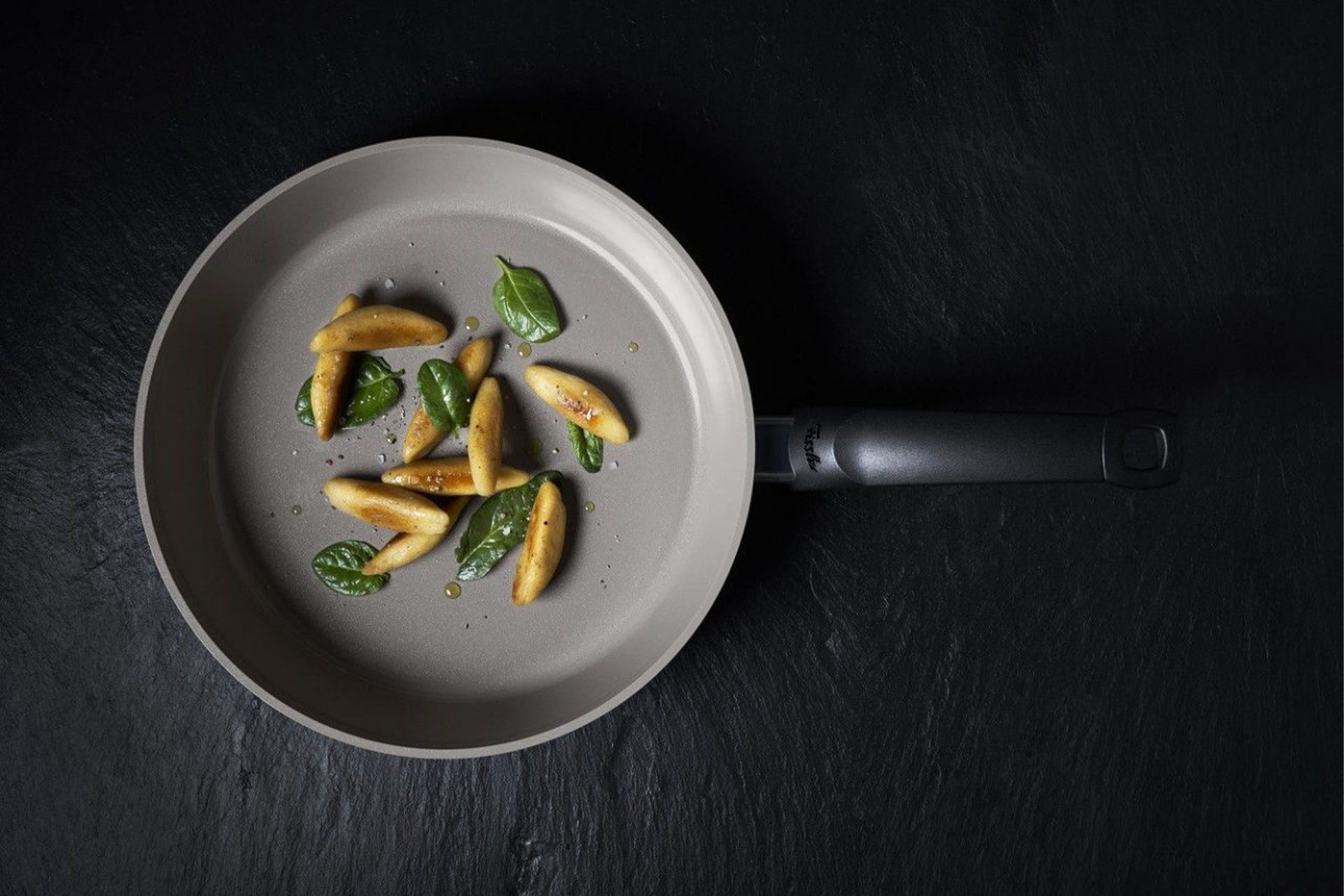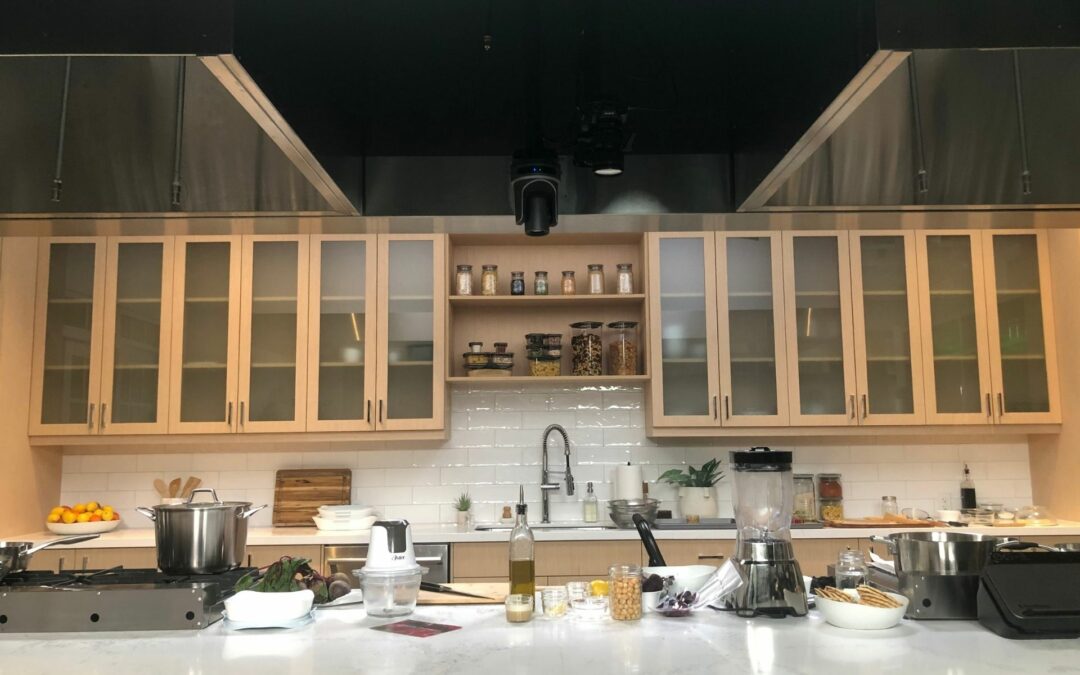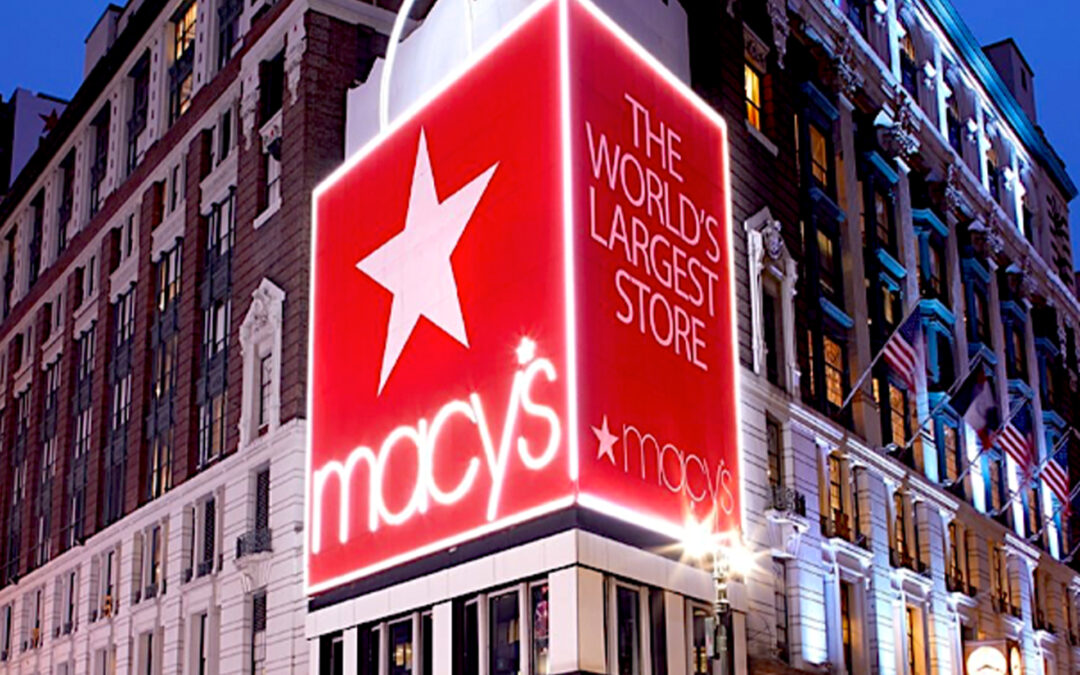Sustainability is a factor that’s more important to consumers today. It has a recognized value in branding and product positioning, which is fostering increased adoption across the housewares sector.
Retailers and manufacturers both have been considering how they can create sustainable products that will increase their attractiveness to consumers. When Target recently launched its Figmint housewares brand, the company made a point of saying that it developed the line with sustainability in mind, such that, for example, it sought and attained a Forest Stewardship Council certification for its Acacia wood cutting board. Target also pointed out that more than 95% of Figmint items do not have plastic in their packaging. Among its sustainability initiatives, Williams-Sonoma, in May 2023, rolled out GreenRow, an own-brand based on using sustainable materials and manufacturing practices in the production of heirloom-quality products, the company asserted.
Action to address sustainability issues is becoming more widespread throughout retail. In December of last year, the National Retail Federation launched a new NRF Center for Retail Sustainability. NRF intends the center to become an industry hub supporting efforts to generate economic value while creating net positive environmental, social and community benefits.
In research sponsored by Beko, which produces cooking, cooling and cleaning products, 55% of consumers responding said they are taking positive environmental actions by installing energy-efficient appliances, at 55%, a proportion even higher than cutting down on single-use plastics, a favorite action of water bottle and other beverage container manufacturers, at 47%. Then, 83% of consumers surveyed said they would be willing to invest in new appliances that reduce food waste, increase electricity and water efficiency, or help them live healthier.
Preference and Confusion
In the second Business of Sustainability Index by GreenPan published last year, 66% of consumers in the United States and 80% of young consumers, ages 18 to 34, said they were willing to pay more for sustainable products than they were merchandise from less sustainable competitors. However, consumers have a dilemma: 78% admitted that they didn’t know how to identify environmentally friendly companies despite wanting to buy from them. As such, developing and determining the sustainability characteristics of products can be an advantage in the market. Indeed, 50% of consumers agreed that clear language on products is needed and 46% said third-party or independent source confirmation is important when they are looking for products with sustainable features. The study suggests that sustainability is important but that its ancillary transparency is important and not just as a requirement. Transparency itself can become a selling point if diligently embraced.
Another important consideration is that the amalgam of sustainability in the larger society, environmentally conscious living in the home, and personal and social health are becoming more common under the umbrella of wellness. The interconnectedness of those factors, which more consumers than ever are thinking about, is another influence on people’s lives.
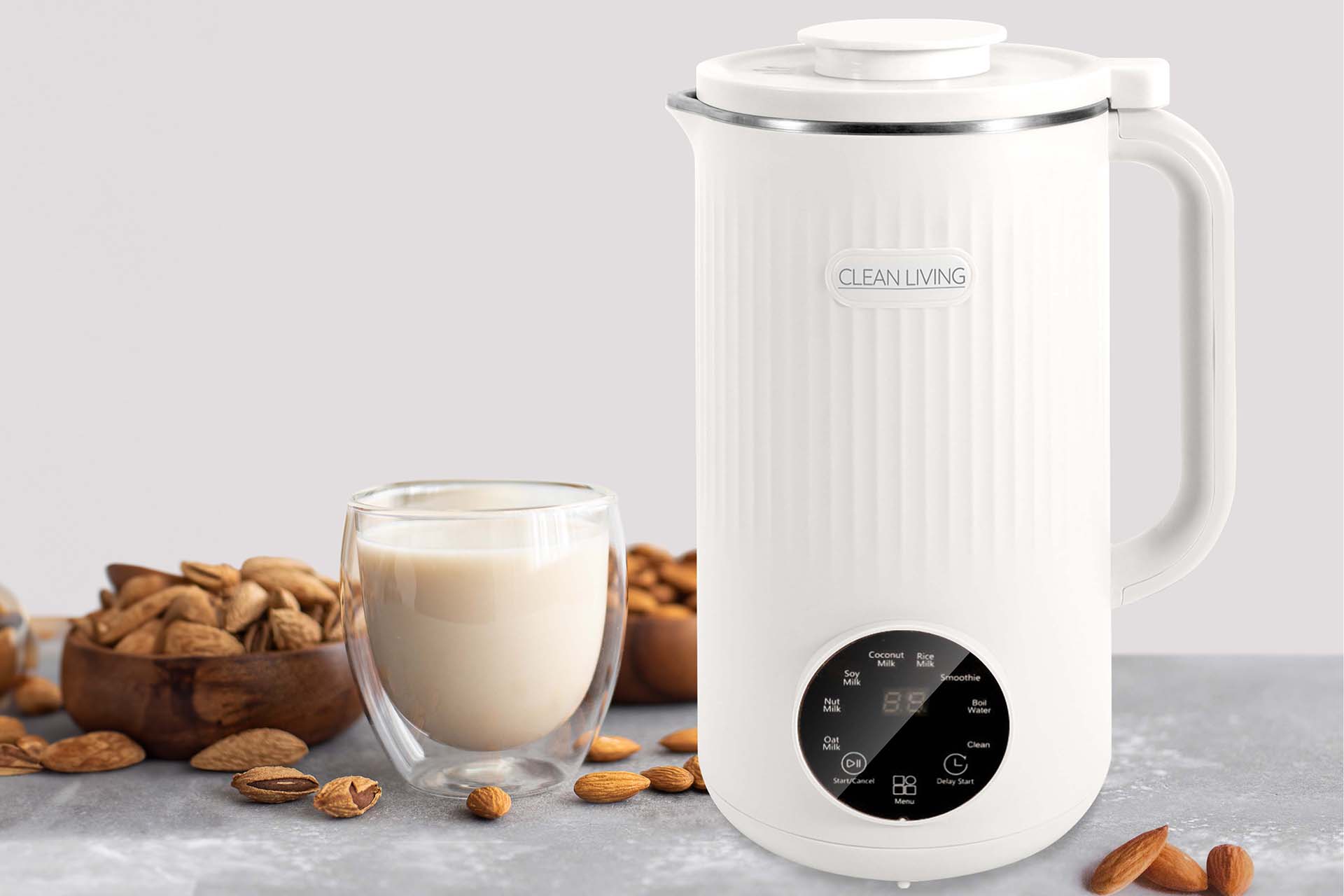
Clean Living with Michelle Plant Milker
Producer Clean Living with Michelle made a point to market to consumers that the company supports sustainability in multiple ways. For instance, the company’s Plant Milker, an appliance to produce different types of alternative milk, means eliminating the waste from numerous plastic containers of store-purchased, commercially processed products. Not only that, but the milker itself ships in low-waste packaging. In the broader wellness sense, the product enables consumers to make their own non-dairy milks that don’t contain the kind of chemical additives, sugars, and fillers many want to avoid. Then, at a time when inflation is a worrisome weight on consumer budgets, it allows users to economically produce plant milk at pennies a serving, the company indicated.
In Cookware
Sustainability is becoming more critical in cookware, as is true of the GreenPan Reserve Sage Collection. The Sage Collection products include a minimum of 65% recycled metal throughout, with the handles being an exception. Items in the collection incorporate a Thermolon non-stick coating that parent company, The Cookware Co., maintains won’t release toxic fumes when overheated and creates 60% less CO2 than traditional nonstick during the curing phase. In addition, they are produced in a manufacturing plant that is 30% solar-powered. In introducing the collection, The Cookware Co. declared that sustainable products aren’t a substitute, they’re the only way forward. Sustainability is becoming more familiar in cookware development throughout the sector. Another example is Fissler’s Ceratal Ceramic Cookware (pictured top), launched with 60% recycled aluminum, and its Pure Collection, which includes up to 90% recycled 18/10 stainless steel.
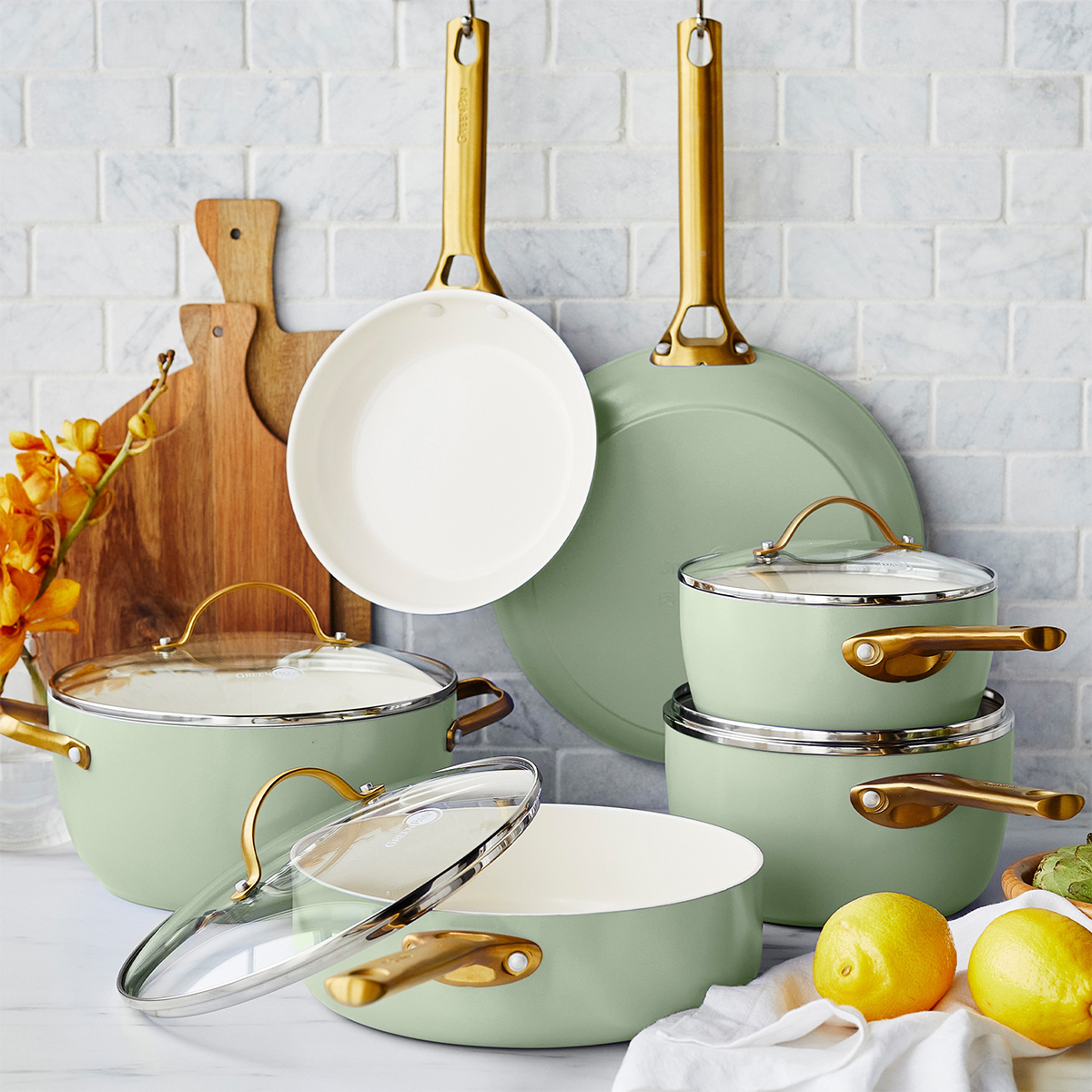
GreenPan Reserve Sage Collection
With consumers skeptical about claims of eco-friendliness, whatever environmental advantages proposed need to be solid and able to withstand scrutiny. It helps if the product functions in a way that is, in some measure, inherently sustainable. So, in small appliances, Salton made the point that its Slim Induction Cooktop uses an eco-friendly food preparation method that is highly efficient and minimizes energy utilization and, so, its carbon footprint, versus traditional cooking methods.
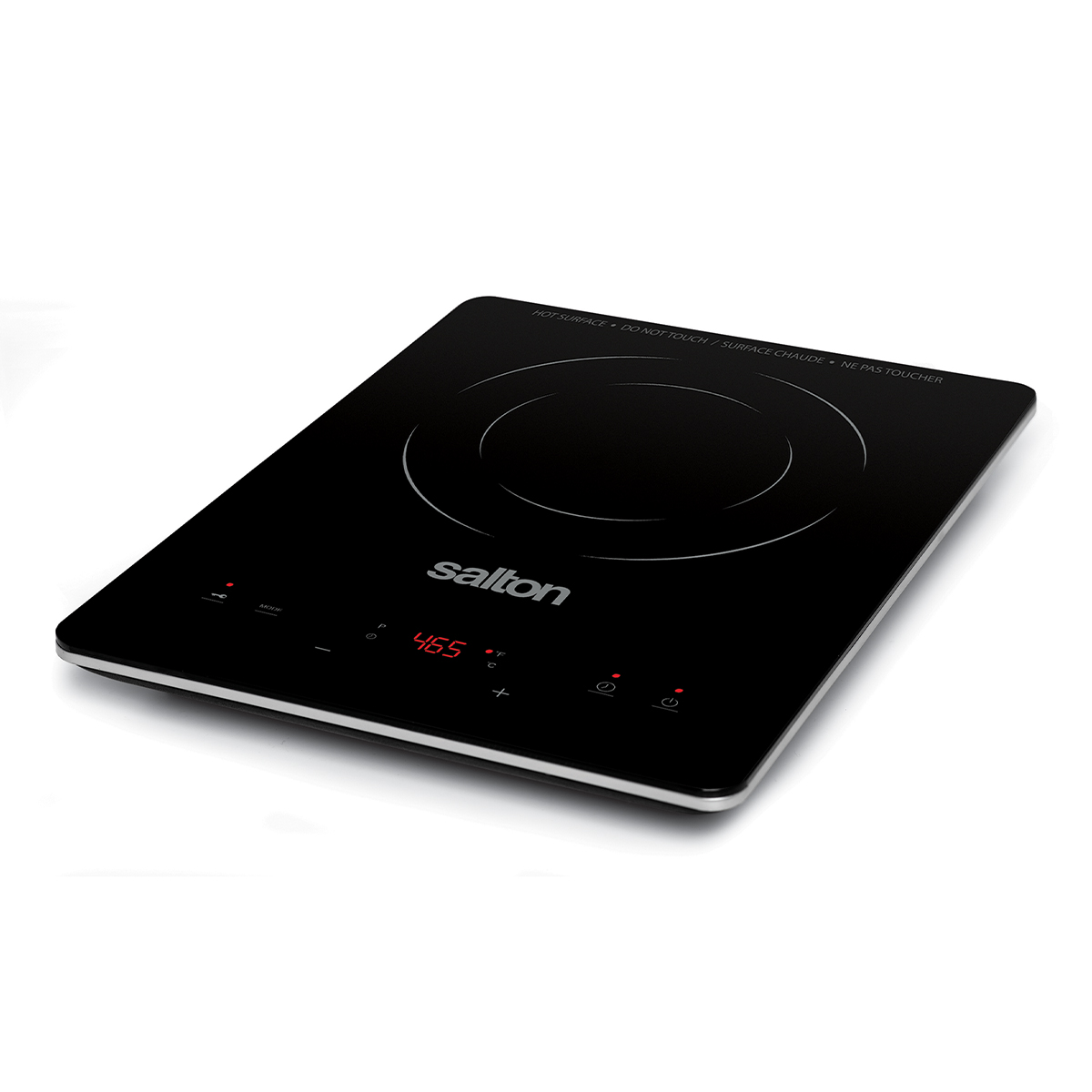
Salton Slim Induction Cooktop
In a different food prep example, the Farberware 3-Piece Recycled Plastic Cutting Board Set offers a trio of different-size products that are all manufactured from up to 97% recycled plastic bottles and BPA-free materials. In the storage realm, Honey Can Do has introduced an item that has sustainability as central to the product proposition: the company’s Bamboo Kitchen Storage, which is composed of 100% sustainable bamboo.
Clean and Organized
New products featured at The Inspired Home Show that support sustainable practices include the Volume Brands Glad Link and Sort, which can serve as a recycling station for homes and offices. The product uses multiple cans to make separating recyclables and waste easier while incorporating Clorox antimicrobial protection to inhibit mildew and odor. After all, a home or office space that is unpleasant to the nose can’t be called a healthy environment and may not be sustainable.
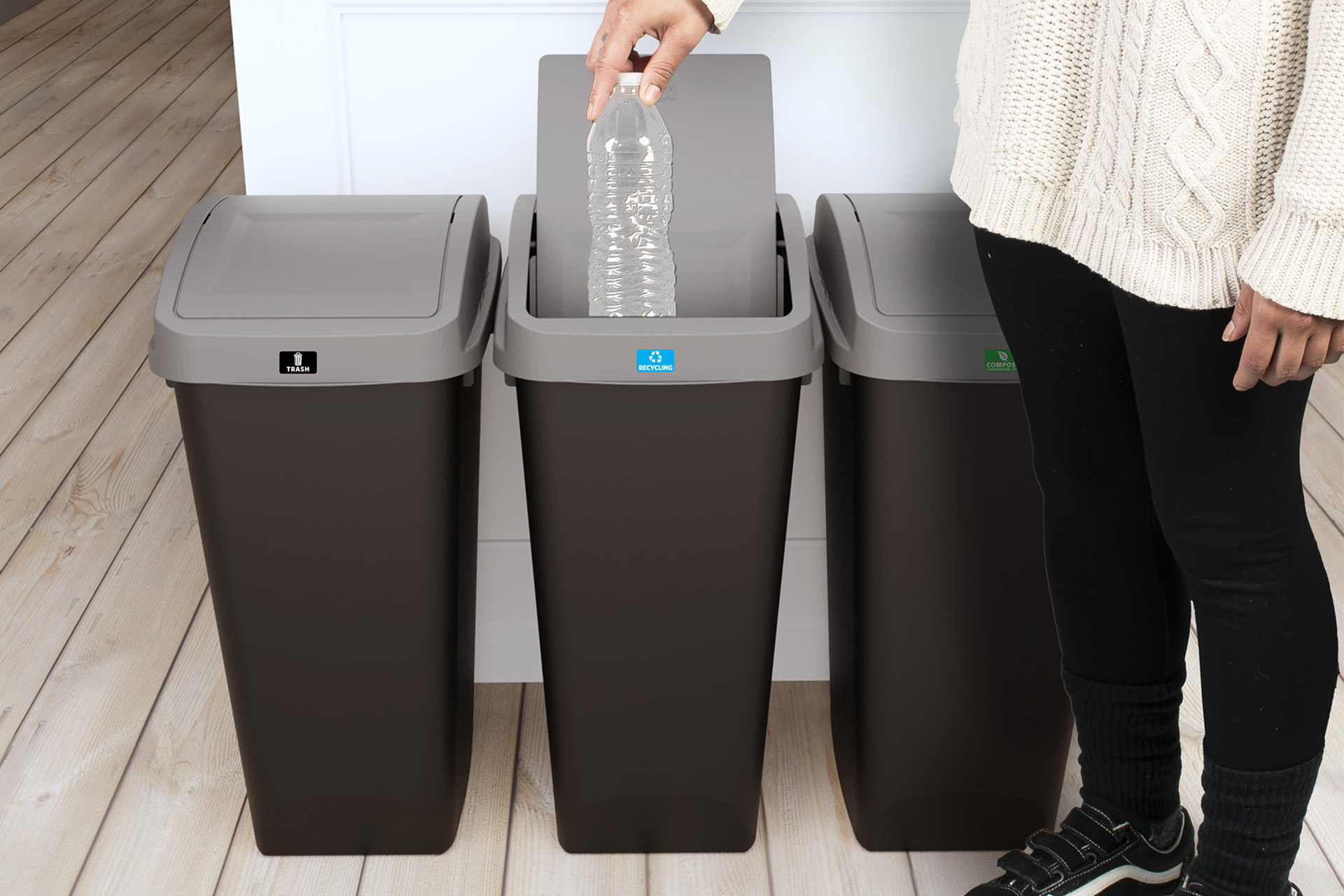
Glad Link and Sort
Among cleaning products, the Gleener Super Eco Scrubbi is made of 100% sustainable fibers from coconut husks. Gleener adds that coconut fibers are naturally antibacterial and gentle on surfaces but still strong enough to take on tough messes, so they are eco-friendly and effective. Although it once might not be something used to promote an item in the rugged world of outdoor grilling, today, Mr. Bar-B-Q Products makes the point that its Steam Clean BBQ Brush Powered by Scrub Daddy has a handle made of 50% recycled plastic.
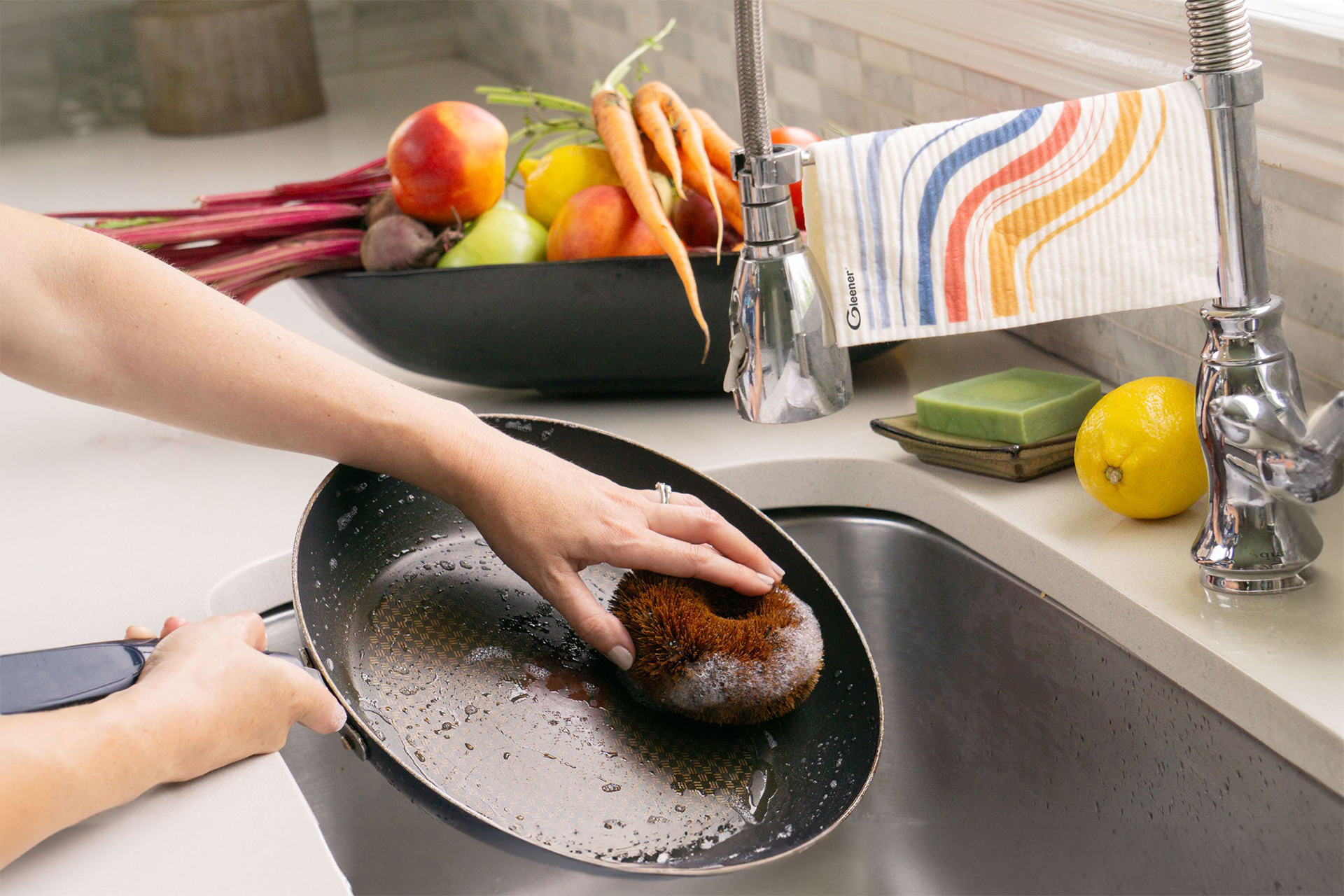
Gleener Super Eco Scrubbi
With many people thinking in broad wellness terms today, the personal environment can represent another arena where consumers are making more decisions based on home ecology. Better energy use, such as with the Salton induction cooktop, and products lacking elements of concern to consumers, such as the Farberware cutting boards, can command attention.
As such, the Roll Down Egg Dispenser, a double-track, gravity-fed two-tier egg storage item, is one of several new products YouCopia has rolled out. It references its BPA-free status and formulation from recycled ABS plastic.

